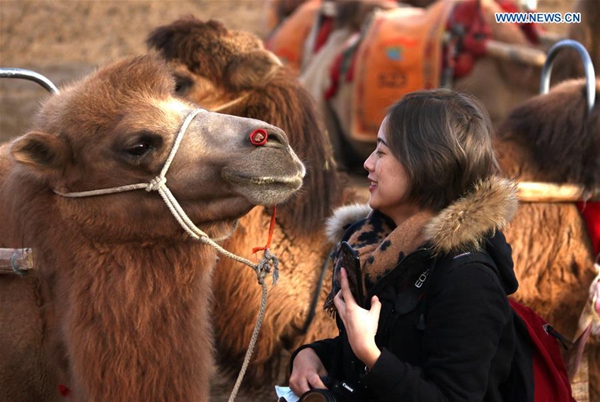China hosts 67 mln tourists on 6th day
|
|
|
A tourist poses for photo at Yueyaquan (Crescent Spring) Scenic Spot in Dunhuang City, northwest China’s Gansu Province. Oct. 6, 2017. People find various ways to spend their National Day holidays, from Oct. 1 to Oct. 8 this year. (Xinhua/Zhang Xiaoliang) |
A total of 67 million Chinese tourists traveled around the country on the sixth day of the National Day holiday, the China National Tourism Administration (CNTA) said on Friday.
The figure represents an increase of 12.3 percent year on year, the CNTA said.
Tourism revenue generated on Friday totaled 54.6 billion yuan (8.23 billion U.S. dollars), up 15.1 percent from the same period a year ago.
The number of tourists in major scenic spots remained high with that in Changbaishan Mountain in northeast China’s Jilin Province rising by 78 percent to 22,500, according to CNTA statistics.
Zhejiang Province in east China hosted 9.77 million tourists who spent a total of 7.974 billion yuan on Friday.
CNTA said the tourist market over the latter half of the holiday running from Oct. 1 to 8 was mainly driven by road trips, periphery tours and leisure travel.
Folk customs, rural tourism, camping, theme parks and tourism complex were increasingly popular.
China’s air, road and railway transport systems are to enter another peak as people have started to return.
On Oct. 1, the first day of the holiday, 15.03 million trips were made by train, an all-time high. This year’s National Day holiday was extended by one more day due to the Mid-autumn Festival which falls on Oct. 4.
A separate report from the China Railway Corporation said trains were expected to carry 12.57 million travelers on Friday.X To cope with the high passenger flow, CRC scheduled 539 extra trains on Friday.
This was the second day that CRC expanded its train services during the holiday. On Thursday, 503 additional trains were arranged.
Tickets were almost sold out for trains traveling back to major sources of tourists in the next three days, CRC said.
Airports in China are also seeing a growing number of passengers returning home.
